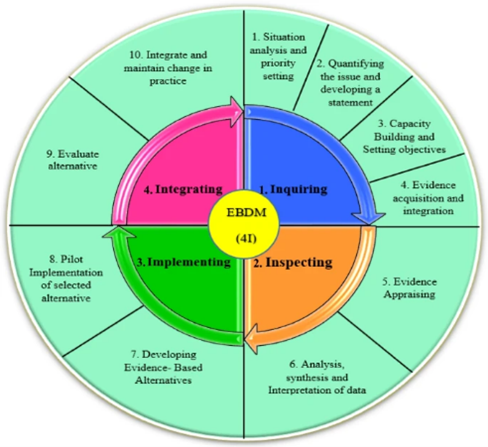Make Accountability a Cultural Norm: Stop Blaming
Just about everyone says they believe in accountability; many try to avoid it.
In previous articles[1] I highlighted the nature of accountability and its benefits. I’m returning to the theme because it remains a controversial topic that is linked to performance improvement and the cultural and psychological biases that get in the way.
Accountability is “The obligation for an individual or organization to account for its activities, accept responsibility for them, and to disclose the results in a transparent manner.”[2] It is the obligation to report and explain about what one does and does not do and to take responsibility for the consequences – “being called to account for one’s actions.”2[3]
Accountability is simply about acknowledging both your own behavior, and the behavior of others.
Though it is not so simple. It is linked to perfectionism and the avoidance of criticism. It is complicated by the reality that there are often several decision makers responsible for an outcome and that results are caused by changing and uncertain conditions, outside of anyone’s control. Accountability is too often linked to blame.
A goal is to make accountability a norm embedded in a culture committed to optimal performance. When we do that, we must avoid finger pointing and replace it with cause analysis and action to remediate current issues and avoid future instances of unskillful behavior.
A Scenario
Let’s look at a scenario from a construction project that as an example of accountability in action:
A contractor responsible for laying down a concrete sidewalk pours concrete on one segment that is widely off from the color expected by the sponsor. The contractor had provided a selection of samples and a light gray one was chosen. The concrete poured was yellow! When the project manager saw it he was not happy. He was even less happy when the sponsor saw it and irately demanded an explanation. The PM was accountable to the sponsor but was not responsible for the error. The contractor, accountable to the PM, took responsibility even though the underlying cause of the problem was with the vendor who supplied the cement. That vendor was accountable to the contractor.
The contractor didn’t try to wriggle out of the need to replace the concrete (an expensive undertaking). He took responsibility.
There was no anger, no finger pointing. Just recognition of the problem, who was responsible for remediating it, a course of remedial action, and agreement about the outcome.
Had the contractor behaved differently, the issues would probably end up in a legal battle and over time a poor image for the contractor. By looking at the causes of the error, the contractor and the sponsoring organization could find ways of avoiding similar problems in the future.
Blame is Why We Are Not Candid and Honest
Accountability is simple, but there is a big if. Candid and honest reporting is not always evident. And the reason for that is rooted in the need to blame someone and the tendency of people to avoid blame.
To blame is to “assign responsibility for a fault or wrong.” Synonyms for blame are to criticize, condemn, find fault with fault, denounce, attack, guilt, etc.
A recent Harvard Business Review article stated that blame is the most destructive behavior in relationships. It encompasses criticism, contempt, defensiveness, and stonewalling.
The author goes on to explain that “humans are all naturally wired to blame other people or circumstances when things go wrong.” … “Our brains interpret blame the same way they interpret a physical attack.” And “Blame also kills healthy, accountable behaviors. Nobody wants to be accountable for problems if they think they’ll be punished for doing so. Furthermore, learning and problem solving go out the window in workplaces that tolerate blame. Instead of learning from mistakes, blamed employees tend to hide their mistakes.” [3]
To make accountability part of the culture it is necessary to change the mindset from blaming to learning from mistakes.
To do that it is necessary to combine training, planning, and practical lessons learned sessions following projects and when errors occur during projects.
Advertisement
[widget id=”custom_html-68″]
Training
There is a need for training that directly addresses accountability and awareness of the tendency to blame and avoid being blamed and how that tendency gets in the way of sustainable optimal performance.
That kind of training is uncommon, particularly in the places that need it most. It is often left out of project management and other business courses. There is a tendency to avoid psychological and mindset issues.
Effective psychological and mindset training requires skillful facilitation and is often best done by embedding it into “practical” management education and reinforcing it regularly in lessons learned activities. Many very good technical management skills trainers are not qualified to teach the emotional and social awareness skills that are needed to address the issue of blaming and accountability. These skills require experiential learning that goes beyond intellectual/conceptual thinking, and sensitivity to those who may be averse to looking at their own thinking and emotional awareness.
Planning
On a more concrete level, accountability and responsibility begin with planning. Communications planning sets the stage for accountability by establishing a reporting process.
Human resource planning establishes responsibility for reporting and performance. Task planning, scope definition, scheduling, risk management and cost estimating set expectations and define roles and responsibilities.
With a comprehensive plan a baseline and with the expectation of candid and honest reporting, accountability becomes a reality, unless it is blocked by cultural and emotional resistance.
Lessons Learned: What, Not Who, is the Cause
Lessons from past performance are learned during debriefs held whenever a project ends and at key points during project life. Looking back at performance is a means for individuals and organizations to learn from experience. The focus is to find causes, not point fingers.
Quality management gurus agree that the causes of errors and quality shortfalls are caused by flaws in the system rather than by individual performance alone. Even though an individuals’ behavior is the direct cause of a problem, systemic issues like poor training, inadequate support, unreasonable expectations, and flawed processes are often the underlying cause
[3] https://hbr.org/2022/02/blame-culture-is-toxic-heres-how-to-stop-it#:~:text=Humans%20are%20wired%20to%20blame.&text=These%20propensities%20are%20partially%20psychological,or%20environmental)%20influencing%20their%20behavior.
Assess Your Process
The way forward to a culture that values and uses accountability to promote improvement begins with assessment, so that individuals, teams, and the organization as a whole can acknowledge the degree to which they avoid or promote accountability and eliminate blaming.
[1] https://www.projecttimes.com/articles/accountability-and-performance/ and https://www.projecttimes.com/articles/accountability-a-contributor-to-optimal-performance/
[2] www.businessdictionary.com/definition/accountability.htm
[3] Sinclair, Amanda (1995). “The Chameleon of Accountability: Forms and Discourses”. Accounting, Organizations and Society20 (2/3): 219–237. doi:10.1016/0361-3682(93)E0003-Y





